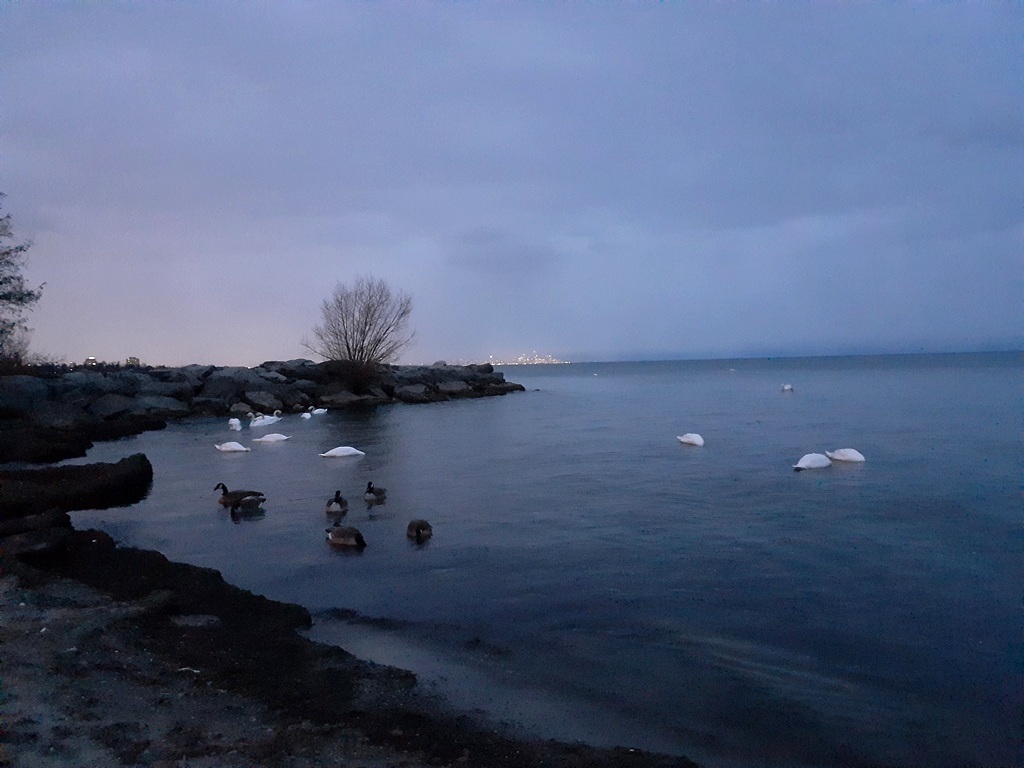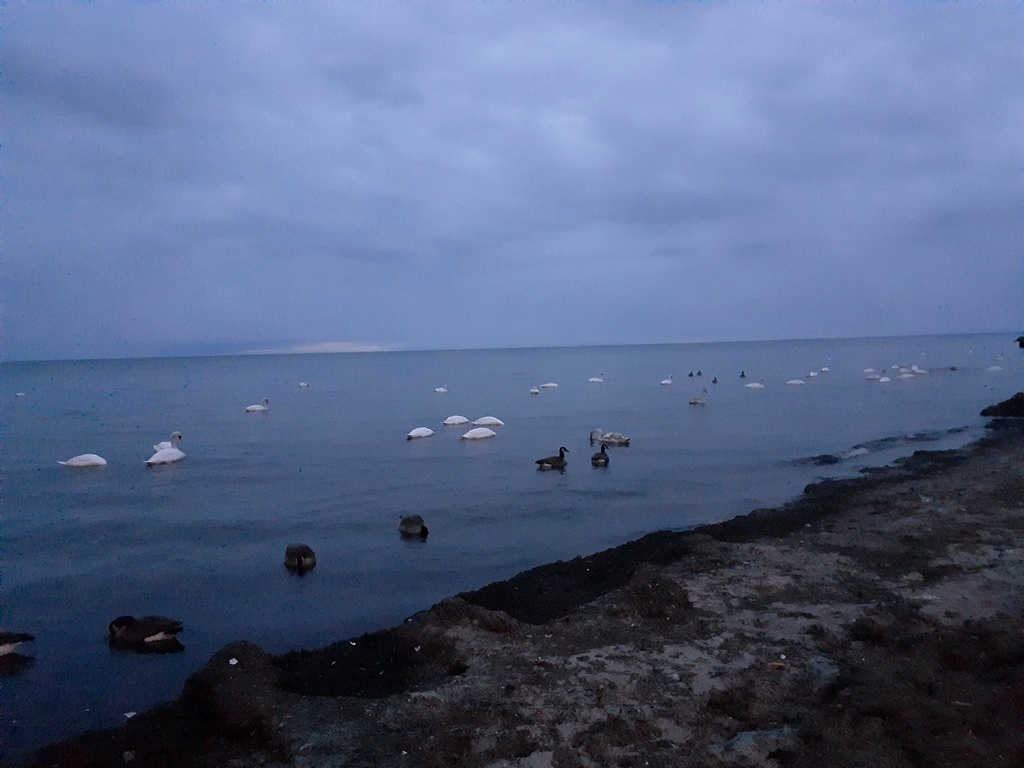That January afternoon was so wonderful that we decided to take a waterfront walk in the Jack Darling Memorial Park located in Mississauga. The air was fresh and frosty and the sun flares very low on the horizon. We went to the beach and couldn’t believe our eyes: lots of majestically beautiful white birds were gliding on the water, gracefully and elegantly. Paddling gently in the frosty water, their white plumage was almost ghostly. The swans seemed unconcerned by our presence, and equally unconcerned by the cold.
 We were sure that these water birds should migrate south when the lake freezes. But many of Ontario’s swans now stay right here, making winter months the perfect period to see them in the dozens
We were sure that these water birds should migrate south when the lake freezes. But many of Ontario’s swans now stay right here, making winter months the perfect period to see them in the dozens
On that day in January, as many as 67 swans can be readily seen congregated in the Lake Ontario. We walked right up to them and they show no sign of being threatened. It was so emotional that we cannot describe our feelings in words. Never-ever we have seen such a breathtaking picture.
Reintroduced to Ontario after being wiped out in the 1800s, trumpeter swans are now thriving.
By 1933, fewer than 70 wild trumpeters were known to exist, and extinction seemed imminent, until aerial surveys discovered a Pacific population of several thousand trumpeters around Alaska’s Copper River. Careful reintroductions by wildlife agencies and the Trumpeter Swan Society gradually restored the North American wild population to over 46,000 birds by 2010.
 Interesting facts about trumpeter swans
Interesting facts about trumpeter swans
- The trumpeter swan (Cygnus buccinator) is a species of swan found in North America. It is a close relative of the whooper swan (Cygnus cygnus) of Eurasia.
- The heaviest living bird native to North America: the weight of adult birds is typically 7–13.6 kg (15–30 lb).
- The largest extant species of waterfowl with a wingspan that may exceed 3m (10 ft). Adults usually measure 138–165 cm long, though large males can exceed 180cm in total length.
- Swan season peaks in late winter when they become very social and congregate in large numbers. By the spring, when they are breeding and nesting, they become very territorial and disperse into the wetlands.
- Like other swans, trumpeter swans often mate for life. Most pair bonds are formed when swans are 5 to 7 years old, although some pairs do not form until they are nearly 20 years old.
- Both parents participate in raising their young, but primarily the female incubates the eggs. She can sit on them for 6 weeks or longer until they hatch. Swans will hatch up to 10 eggs at one time. Baby swans are called cygnets and stay with their mother for 6 months. The bonded pair will raise clutch after clutch of cygnets in their lifetimes, learning from their successes and failures each time.
- Swans live for 20-30 years. The trumpeter swan lives for an average of 24 years in the wild but has been known to live for 33 years in captivity.
 Swan loyalty
Swan loyalty
Swans have only one partner for their entire life. Their loyalty to their mates is so storied that the image of two swans swimming with their necks entwined in the shape of a heart has become a nearly universal symbol of love. If their partner dies, they could in fact die of heartbreak.
Swan song
The swan song is an ancient belief that swans sing a beautiful song just before their death, having been silent during most of their lifetime.
Leonardo da Vinci noted “The swan is white without spot, and it sings sweetly as it dies, that song ending its life.”
The well-known Orlando Gibbons madrigal “The Silver Swan” states the legend thus:
- The silver Swan, who living had no Note,
- when Death approached, unlocked her silent throat.
- Leaning her breast against the reedy shore,
- thus sang her first and last, and sang no more:
- “Farewell, all joys! O Death, come close mine eyes!
- “More Geese than Swans now live, more Fools than Wise.”



















